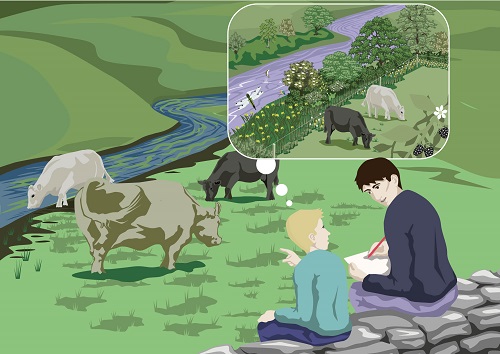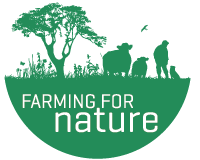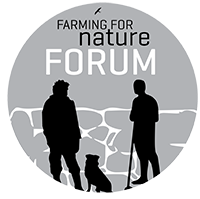Not sure where to begin with improving nature on your farm? Here are some quick pointers to get you started.
16 ways to start improving nature on your farm:
- Spend time observing what is on your land. A good starting point is to retain all the existing natural habitats on your farm, such as hedgerows, woodlands, ponds, wetlands etc., and to work towards improving their management for biodiversity and carbon capture.
- For instance, hedgerows are great for wildlife but may need on-going management to maximise their benefit for wildlife. Enhance your hedgerows by filling in gaps or ‘leggy’ areas with native trees and shrubs or by coppicing/laying what is already there.
- If planting a new hedgerow, plan for a diverse Include many different native trees and shrubs and leave room for wildflowers to grow at the base. The more diverse the hedgerow, the more diverse the species of wildlife (biodiversity) that utilise it. If possible, create a bank similar to those often seen under old hedgerows; this creates more than one habitat.
- Don’t be too neat and tidy! Allow hedgerows to mature and flower and to grow both tall and wide. Cut hedgerows on a three-year rotation, if at all. To provide winter food for wildlife, cut hedgerows as late in the cutting season as possible, between November and February. If you have to cut a roadside hedge annually, if possible, cut only the side protruding on to the road.
- Similarly, allow the base of hedgerows and other field margins to flower and set seed before cutting – this may require some fencing, consider keeping livestock two-metres out, during the main flowering period (May-July).
- Create a map showing different natural resources and infrastructure on your farm e.g. habitats and features, and even some of the more common species. Then draw up a plan and list the key actions you’d like to take, over a period of a few years, to enhance nature on your farm. Can you enlist the help of someone who knows about nature in your area and get their advice on what actions would have the greatest impact? When planning, don’t forget to consider each season, e.g. winter wildfowl, autumn berries, spring flowers, summer meadows!
- If you are creating new habitats on your farm, remember that they are more likely to be colonised by wildlife if they are close to, or connected to, existing habitats. Also, do not destroy an already functioning habitat to create another!
- How about creating and managing a pond for wildlife? Where possible, choose a degraded wet area for your pond rather than an existing wetland that is already supporting wildlife.
- Create a native wildflower pollinator plot for bees, butterflies, moths and hoverflies so that there are always flowers in bloom between February and October.
- Consider a multispecies grassland. Using many species means there are fewer bare patches and a greater diversity of feeding and sheltering options for insects and birds. Also, diverse pastures can sequester more carbon, require lower inputs and have proven to be more productive than monocultures.
- Consider a lower disturbance approach to your soil – reducing the frequency of ploughing/tillage will help you to store more carbon and improve the health of your soil over time.
- Reduce (or eliminate) pesticide and herbicide inputs. If you are using these products, avoid spraying field margins, wetlands and other natural habitats.
- Reduce or eliminate the spreading of slurry and fertilizers on natural pastures – they will damage many of the soil invertebrates and wildflowers. To prevent slurry, fertilizer and livestock run-off entering watercourses, create a nutrient management plan for your farm and fence off at least a three-metre buffer strip for rivers and a two metre buffer strip for small streams.
- Reduce or completely avoid the use of toxic rodenticides; these can inadvertently lead to the death of owls and other non-target species.
- Consider providing a sanctuary for key species you wish to attract to your farm. This could be in the form of beetle banks, earth banks for solitary bees, nesting cups for swallows and house martins, hibernation spots for bats, seed-bearing plots for yellowhammers, goldfinches and linnets, dead leaves and decaying wood for insects and hedgehogs, long grass for moths and hares, etc.
- There is much that can done on farms for biodiversity but the key is to start somewhere! Your neighbour may look over the hedge and wonder what you are doing. Why not get them involved? Link up and work together on creating a mosaic of connected habitats for wildlife, instead of islands of sanctuary.
For more information on how to farm for nature, search by
SECTOR HABITAT SEASON FAQS
FURTHER RESOURCES EMAIL US ANY SUGGESTIONS


